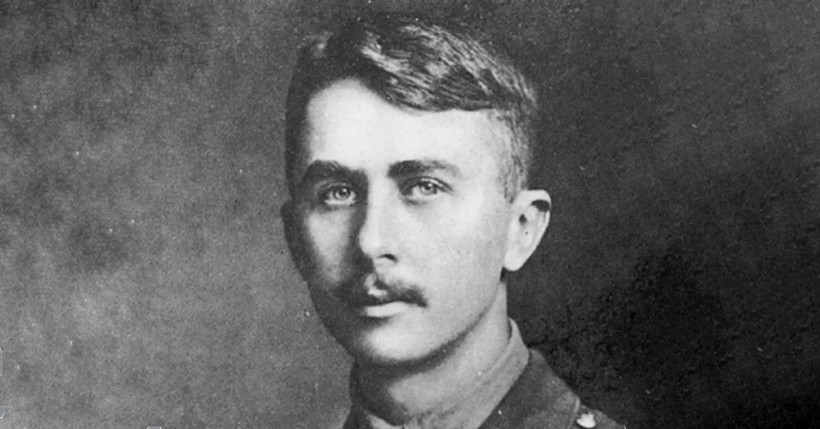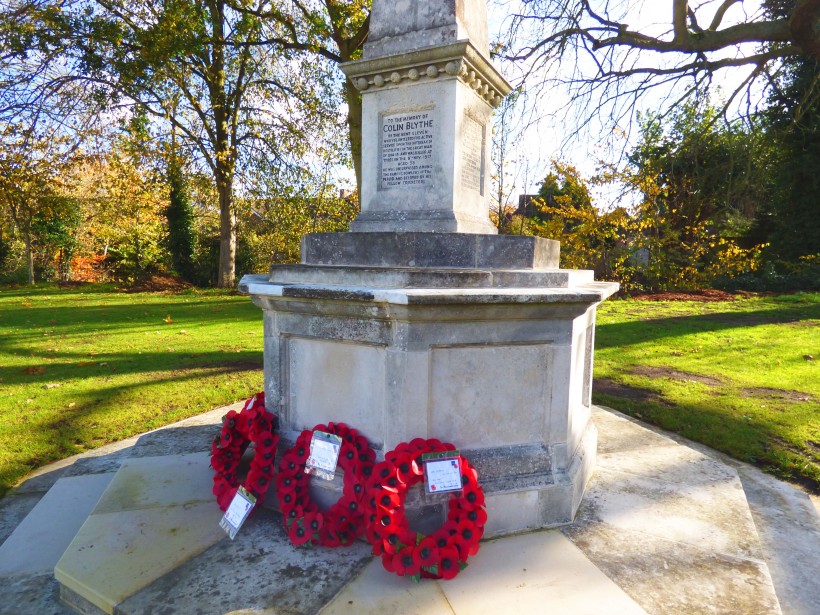Kent Remembers: George Whitehead
Monday 6th November 2023

Born: 27.8.1895, Bromley. Died: 17.10.1918, Lauwe, Menin (now Menen), Belgium.
Kent 1914.
Youngest son of a stockbroker and JP for the County of Kent, George Whitehead was an outstanding schoolboy cricketer.
In the 1919 Wisden his obituary reads ‘Among the many cricketers lost during the war perhaps none, except John Howell of Repton, had better prospects of winning distinction at the game’.
He captained the Eleven at his preparatory school and was in the side at Clifton from 1911 to 1914, as captain in the two latter years. Remarkably consistent, he averaged over 40 in every season from 1912 to 1914. In 1912 he scored 259 against Liverpool but his best seasons were 1913, 706 runs (avge. 46.73) with three centuries, and 1914, 485 runs (avge.40.42) and 36 wickets (avge.13.61).
During his time at Clifton he scored over 2,000 runs. He was selected for Public Schools v MCC in 1912, 1913 and 1914 and for Lord’s Schools v The Rest in 1913 and 1914. Whitehead played for Band of Brothers, represented Clifton at Fives and was two years in the Rugby Fifteen.
When moving up to the next level as a cricketer, Whitehead failed to replicate his success in school cricket in the limited time left available to him by the outbreak of war.
In August 1912 he made his Kent Second Eleven debut against Dorset at Poole and played a further two Minor County Championship matches after 4 August 1914 but in six innings he managed only 61 runs with a top score of 16 (twice) and conceded 15 runs without taking a wicket.
He was selected for Kent’s final County Championship matches in 1914 but in four innings he failed to achieve double figures and did not get a chance to bowl.
Entered for Trinity College Oxford, he opted instead to join the Army and, on the strength of his service with the Clifton OTC, gained admission as a cadet to the RMA Woolwich. Commissioned in July 1915, he was posted to 75 Brigade, RFA, a unit briefly in the 16th (Irish) Division and subsequently in the Guards Division.
With the latter, he fought as a gun section commander and forward observation officer at the Battle of Loos in 1915 and in the second stage of the Battle of the Somme until, taken ill with appendicitis, he underwent an operation in November 1916 and was invalided home.
Passed fit for service again in 1917, he transferred to the Royal Flying Corps (the Royal Air Force after April 1st 1918) and, after training at Reading, Stamford and Worthy Down, qualified as a pilot.
In September 1918 he joined 53 Squadron on the Western Front flying RE8 two-seaters.
Popularly known as the ‘Harry Tate’ after one of the greatest comedians of the era, by 1918 the RE8 was the work horse of what were known as the corps reconnaissance squadrons, employed primarily on unglamorous but vital artillery spotting and short-range photo-reconnaissance duties.
It was while engaged on locating enemy gun positions that Whitehead’s aircraft was shot down near Lauwe, Belgium by ground fire from German machine guns, killing both the pilot and observer, Lt Reginald Griffth MC.
In his Wisden obituary an ‘Old Cliftonian’ describes George Whitehead as ‘the perfect flower of the public schools’ and ‘intellectually, far above the average’ but if the circumstances of his fatal crash were as described by the Mayor of Lauwe in a letter to Lord and Lady Whitehead, their son’s death stands out as utterly pointless in a war in which casual, almost incidental, death was commonplace.
According to this account, as the inhabitants of Lauwe celebrated their liberation after four years of German occupation, Whitehead made a series of low-level passes over the town while, raising himself in the cockpit and waving a flag amid the cheers of the population.
The machine guns caught the aircraft near the railway station. The bodies were originally buried in the town cemetery and the grateful people of Lauwe re-named the road ‘Place George Whitehead’.
Both men were later re-buried in Harlebeek New British Cemetery.
After nearly one hundred years it would be wrong to be judgemental, not least because prior to his volunteering for the RFC George Whitehead had been diagnosed with neurasthenia, but to fly an RE8 (maximum speed 102 mph) at low altitude on a straight and level course for no serious purpose and for an extended period while still in machine gun range of German positions was foolhardy to put it no stronger and resulted, not only in totally unnecessary loss of life, but also in loss of the aircraft and with it the information it had been sent to obtain.
Apart from the feelings of the family of the unfortunate observer, one can, if so inclined, speculate on what the CO of 53 Squadron might have said had Whitehead survived the crash.
His death was all the more tragic in that, in a letter written shortly after he joined the RFC, he assured a friend that he would not run any unnecessary risks.
Apart possibly from impromptu matches in France, the only cricket he seems to have played after leaving Clifton was at Lord’s in July 1918 when he captained a Public Schools Eleven against No.1 Royal Field Artillery Cadet School which was based in St John’s Wood. His estate was valued for probate at £788.18s.11d.
His elder brother James Hugh Edendale Whitehead played for Kent Second eleven and first-class cricket for MCC. A Second Lieutenant in the Royal West Kent Regiment, he died in 1919 of illness contracted on active service.
Profile adapted from Derek Carlaw’s ‘Kent County Cricketers: A to Z, 1806-1914’
Previous profiles of Kent Cricketers that fell during both World Wars include:
Colin Blythe
Gerry Chalk
Arthur Du Boulay
Eric Hatfeild
Kenneth Hutchings
David Jennings
Lawrence Le Fleming
Geoffrey Legge
Lionel Troughton

